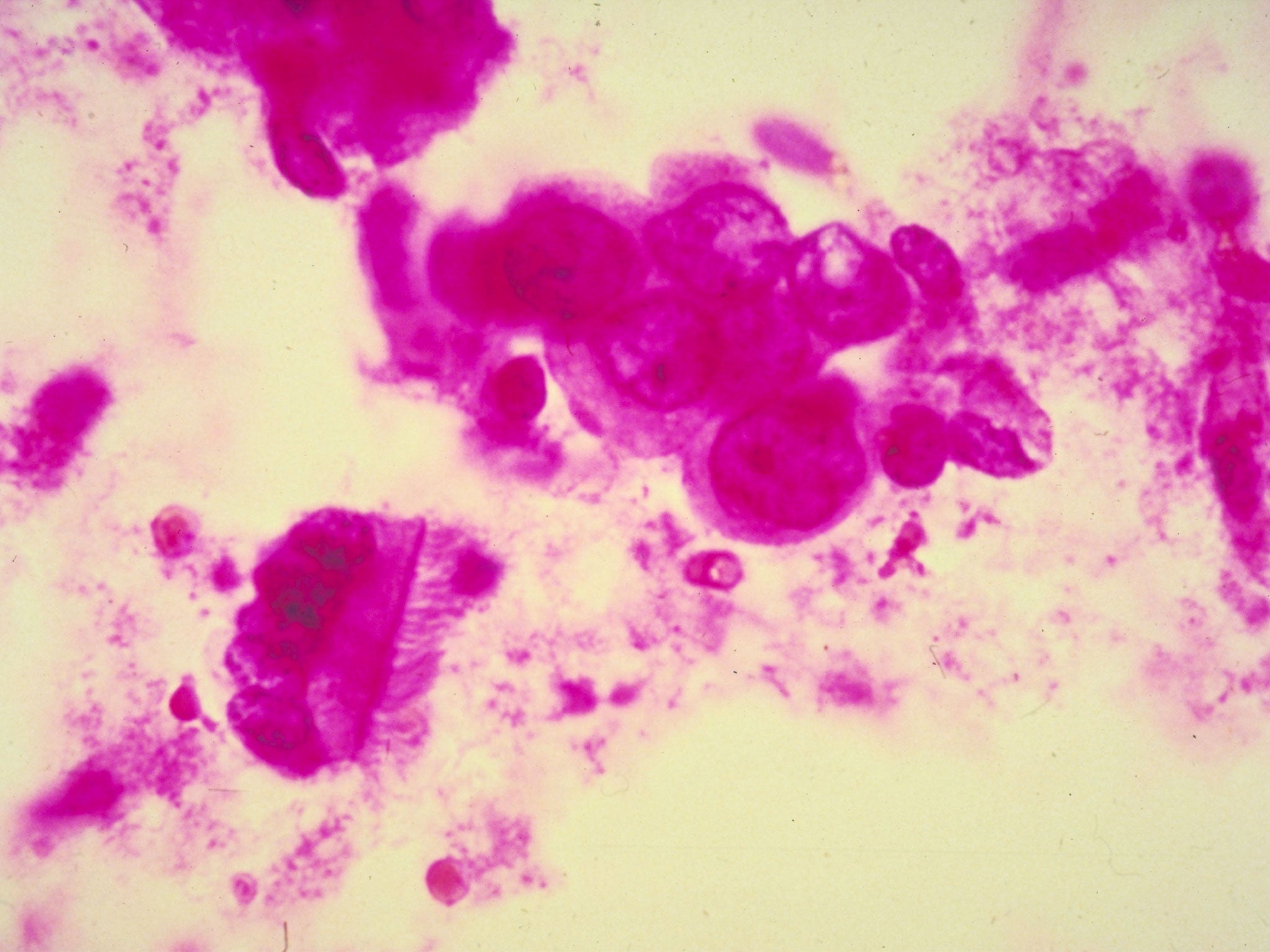Potential revolution in cancer treatment voted breakthrough of the year by scientists
New treatment uses body’s own immune defences to seek out and destroy tumour cells wherever they appear

A potential revolution in cancer treatment that involves harnessing the body’s own immune defences to eliminate tumours has been voted breakthrough of the year by the Washington-based journal Science.
The experts behind the vote said there was a sense of a “paradigm shift” in cancer treatment as a result of the latest research into using the body’s own immune defences – antibodies and T-cells – to seek out and destroy tumour cells wherever they appear.
Cancer immunotherapy marks a turning point in cancer because it is so different to conventional forms of tumour therapy and this year saw encouraging results from some of first clinical trials of drug treatments based on the revolutionary approach, said Science.
“Immunotherapy marks an entirely different way of treating cancer by targeting the immune system, not the tumour itself. Oncologists, a grounded-in-reality bunch, say a corner has been turned and we won’t be going back,” it said.
Scientists are exploring several approaches to cancer immunotherapy. One involves the manufacture of monoclonal antibodies, such as a drug called ipilimubab which binds to T-cells causing them to proliferate and destroy cancers.
Bristol Myers Squibb, which manufactures ipilimubab, reported this year that out of 1,880 patients with advanced melanoma cancer, 22 per cent were still alive after 3 years – a significant improvement on previous treatments.
Other companies are working on ways of genetically modifying a patient’s own T-cells so that they target tumour cells. Early tests have shown it to be effective against leukaemia.
Meanwhile, in Britain a company called Immunocore based near Oxford has developed a drug molecule that acts like a double-sided glue to stick T-cells specifically to certain types of cancer cells – leading to their eventual destruction.
“This year there was no mistaking the immense promise of cancer immunotherapy,” said Tim Appenzeller, the chief news editor of Science who was involved in the selection of breakthrough of the year.
“So far this strategy of harnessing the immune system to attack tumours works only for some cancers and a few patients, so it’s important not to overstate the immediate benefits. But many cancer specialists are convinced that they are seeing the birth of an important new paradigm for cancer treatment,” Mr Appenzeller said.
One of the runners-up to the breakthrough of the year was a gene-editing technique called CRISPR which allows scientists to change any part of the genome of animals and plants, down to the smallest alterations in the DNA sequence.
“CRISPR is absolutely huge. It’s incredibly powerful and it has many applications, from agriculture to potential gene therapy in humans,” Craig Mello of the University of Massachusetts Medical School, who shared the 2006 Nobel prize in medicine, told The Independent in November.
“It’s a tremendous breakthrough with huge implications for molecular biology and molecular genetics. It’s a real game changer,” Dr Mello said.
Coincidentally, the rival journal Nature has voted a leading CRISPR researcher as one of the ten people of 2012 who “mattered most”. Feng Zhang of the Massachusetts Institute of Technology in Cambridge was one of the first to show that CRISP works in human cells, which could lead to new treatments for genetic disorders.
Subscribe to Independent Premium to bookmark this article
Want to bookmark your favourite articles and stories to read or reference later? Start your Independent Premium subscription today.

Join our commenting forum
Join thought-provoking conversations, follow other Independent readers and see their replies